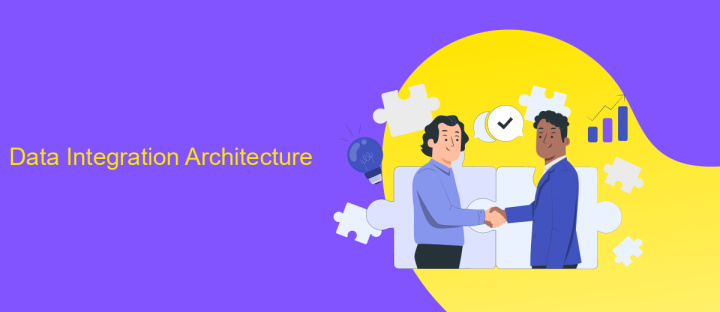How Does Data Integration Software Work
Data integration software plays a crucial role in modern business operations by seamlessly combining data from various sources into a unified view. This technology enables organizations to streamline their data management processes, ensuring accuracy, consistency, and accessibility. In this article, we will explore the fundamental mechanisms behind data integration software, its key components, and the benefits it offers to businesses.
Introduction
Data integration software is a critical tool for modern businesses, enabling them to consolidate information from various sources into a single, coherent view. This process is essential for making informed decisions, improving operational efficiency, and gaining a competitive edge in the market. By seamlessly combining data from disparate systems, organizations can unlock valuable insights and drive innovation.
- Combines data from multiple sources
- Ensures data consistency and accuracy
- Facilitates real-time data access and analysis
Understanding how data integration software works is crucial for leveraging its full potential. It involves a series of steps including data extraction, transformation, and loading (ETL), which together help in maintaining data integrity and accessibility. As businesses continue to generate vast amounts of data, the role of data integration software becomes increasingly important in harnessing this data for strategic advantage.
Data Integration Architecture

Data integration architecture is a systematic approach that combines data from different sources into a unified view. This architecture typically involves several layers, including data extraction, transformation, and loading (ETL), data storage, and data access. The ETL process extracts data from various sources, transforms it into a consistent format, and loads it into a centralized repository, such as a data warehouse or data lake. This centralized repository allows for efficient querying and analysis, enabling organizations to derive valuable insights from their data.
Modern data integration solutions often utilize cloud-based services to streamline the integration process. For instance, ApiX-Drive offers a robust platform for automating data integration workflows. By connecting various applications and services, ApiX-Drive facilitates seamless data transfer and synchronization, eliminating the need for manual intervention. This not only improves data accuracy but also enhances operational efficiency. With its user-friendly interface and extensive integration capabilities, ApiX-Drive enables businesses to set up and manage their data integration processes effortlessly.
Data Extraction and Transformation

Data extraction and transformation are crucial steps in the data integration process. They involve retrieving data from various sources and converting it into a format suitable for analysis and integration. This ensures that the data is accurate, consistent, and ready for use in decision-making processes.
1. Data Extraction: This is the process of collecting raw data from multiple sources such as databases, cloud storage, and APIs.
2. Data Cleaning: The extracted data is then cleaned to remove any inconsistencies, duplicates, or errors.
3. Data Transformation: The cleaned data is transformed into a unified format, which may involve normalization, aggregation, and enrichment.
4. Data Loading: Finally, the transformed data is loaded into a target system, such as a data warehouse or analytics platform.
These steps ensure that the data is not only integrated but also optimized for further analysis. Effective data extraction and transformation help organizations make informed decisions by providing a comprehensive and accurate view of their data landscape.
Data Management and Governance

Effective data management and governance are critical components of any data integration strategy. These practices ensure that data remains accurate, consistent, and secure throughout its lifecycle. By establishing clear guidelines and policies, organizations can maintain data integrity and facilitate seamless integration across various systems.
Data governance involves setting up a framework that defines roles, responsibilities, and processes for data handling. This framework helps in mitigating risks associated with data breaches, non-compliance, and poor data quality. Additionally, it provides a structured approach to data stewardship, ensuring that data assets are managed and utilized effectively.
- Data Quality: Ensuring data accuracy, completeness, and reliability.
- Data Security: Protecting data from unauthorized access and breaches.
- Compliance: Adhering to regulatory requirements and standards.
- Data Stewardship: Assigning responsibility for data management tasks.
Implementing robust data management and governance practices not only enhances the quality and security of data but also supports better decision-making processes. Organizations can leverage integrated data to gain valuable insights, drive innovation, and achieve strategic objectives. Consequently, a well-governed data environment is essential for maximizing the potential of data integration software.
- Automate the work of an online store or landing
- Empower through integration
- Don't spend money on programmers and integrators
- Save time by automating routine tasks
Benefits of Data Integration Software
Data integration software offers numerous benefits, streamlining the process of combining data from various sources into a unified view. This enables businesses to achieve a more comprehensive understanding of their operations, leading to better decision-making and improved efficiency. By consolidating data, companies can eliminate redundancies, reduce errors, and ensure that all departments have access to the same accurate information, fostering collaboration and consistency across the organization.
Furthermore, data integration software can significantly reduce the time and effort required to manage and analyze data. Tools like ApiX-Drive facilitate seamless integration between different applications and services, automating data transfer and synchronization. This not only saves valuable time but also minimizes the risk of human error. Additionally, businesses can leverage real-time data updates to respond more swiftly to market changes and customer needs. Overall, data integration software enhances operational agility and supports strategic growth by providing a solid foundation for data-driven decision-making.
FAQ
What is data integration software?
How does data integration software work?
What are the benefits of using data integration software?
Can data integration software handle real-time data?
Is it necessary to have technical expertise to use data integration software?
Apix-Drive is a simple and efficient system connector that will help you automate routine tasks and optimize business processes. You can save time and money, direct these resources to more important purposes. Test ApiX-Drive and make sure that this tool will relieve your employees and after 5 minutes of settings your business will start working faster.


